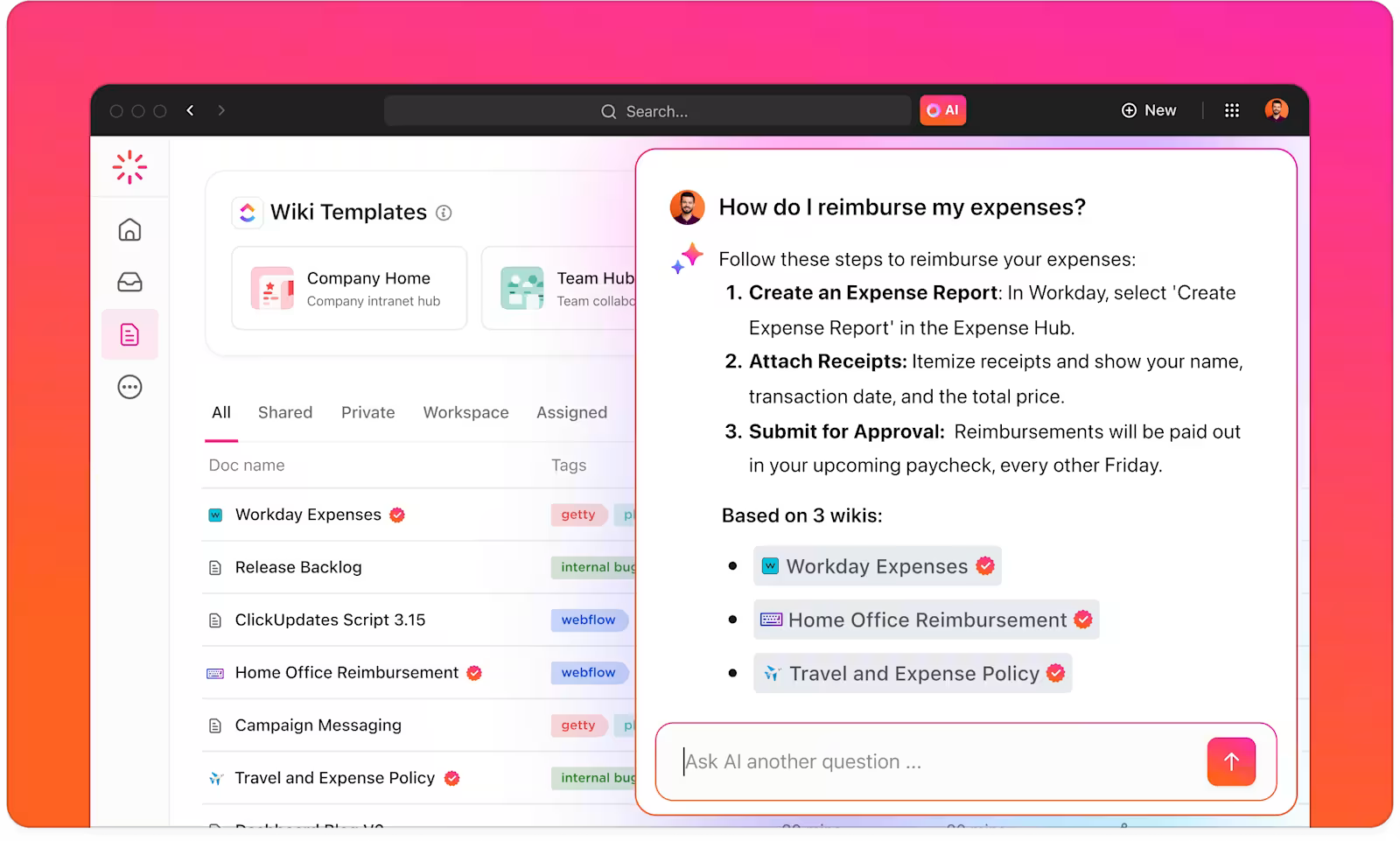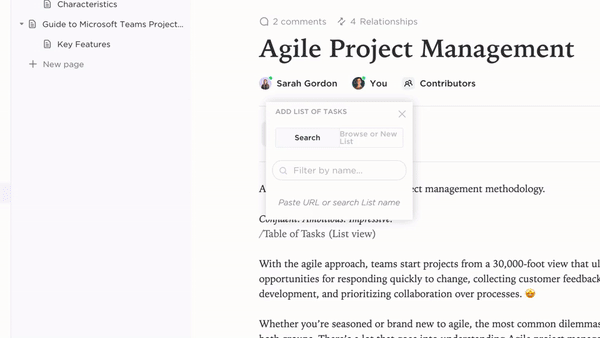How to Master Product Knowledge in Sales to Drive Success

Sorry, there were no results found for “”
Sorry, there were no results found for “”
Sorry, there were no results found for “”

Today, customers come to the table more prepared than ever. They’ve read the reviews, analyzed the features and benefits, compared the specs, and even weighed expert opinions—all before the first conversation with your sales team.
To stand out, meeting customer expectations isn’t enough—you’ll need to exceed them. And that requires your sales team members to become trusted advisors with product knowledge beyond surface-level features and specs.
But where do you start building that expertise? Right here.
In this blog, you’ll discover what product knowledge truly means in sales and how a well-informed sales team can create tangible benefits for your business. Let’s go!
Product knowledge is simply understanding the ins and outs of a product—how it works, what it does, and why anyone should care. It’s knowing the features, benefits, USPs, and functionalities so well that you can talk about them effortlessly with customers.
For maximum impact, your sales team needs to consider these six critical areas in product-led sales:
The majority of customers want to know the price before they make a purchase. Be ready to provide accurate and up-to-date details on:
Plus, don’t just state the price—justify it. Highlight the value customers get for their money. If your product is more expensive than a competitor’s, explain why it’s worth it.
You should know everything about your product by heart—its size, color options, materials, compatibility, durability, and more. When a customer asks how your product works, you should be ready with a solid, clear explanation that covers all the necessary details.
🔍Did You Know? Research shows that when people walk into a store, about half of them are really looking for expert advice on what to buy. 73% of customers say that product knowledge is what they need most from a sales associate.
Great sales representatives do more than just list features. They convincingly demonstrate how a product solves problems or improves lives.
For example, instead of saying, ‘This phone has a fast processor,’ sales representatives often say, ‘This phone’s fast processor means your apps load instantly, your videos never lag, and your work gets done faster.’
If your product has a high price tag, a strong warranty, or a flexible return policy can be a deal-clincher for your customers. The key is to:
Show customers that your product meets recognized industry standards or holds important certifications. This could include eco-friendly labels, safety compliance, or regulatory approvals. For example, mentioning your product is BPA-free and fully compliant with FDA safety requirements puts a stamp of quality and reliability on your brand.
Even if your customers don’t mention it, having a quick, casual pitch ready about upcoming features or improvements can work wonders. It’s a great way to spark their interest, show that your product is evolving to stay ahead of the game and align with the latest product management trends.
Different departments need to collaborate for everyone to truly understand, use, and share product information effectively.
Here’s what we mean 👇
| Stakeholder | Role |
| Product team | They create the product, so they’re the go-to resource for deep insights into features, updates, and future improvements |
| Sales team | They use product knowledge daily to pitch, handle objections, create sales training materials, and sell effectively |
| Marketing team | Strong product knowledge ensures they craft messaging that aligns with real customer pain points and sales conversations |
| Customer support team | They enhance customer experience with post-purchase support, issue handling, and query resolution |
| Operations and IT teams | They ensure all the product information sales reps need—like pricing, integrations, and technical specs—is accurate and easily accessible in the CRM and knowledge base |
| Leadership and strategy teams | They use product knowledge to make big-picture decisions, shape competitive positioning, and boost customer satisfaction |
📮ClickUp Insight: Nearly 42% of knowledge workers prefer email for team communication.
But it comes at a cost. Since most emails only reach select teammates, knowledge stays fragmented, hampering collaboration and quick decisions. To improve visibility and accelerate collaboration, leverage an everything app for work like ClickUp, which turns your emails into actionable tasks within seconds!
When your team has the right product information at the right moment, it can completely transform customer interactions and drive smarter, more strategic decisions.
Let’s find out how:
You interact with customers daily, which means you have firsthand knowledge of what’s working, what’s missing, and what could be improved. This feedback is gold for your product team. When you systematically collect and share customer insights, you can:
📝 Example: If customers mention the checkout process feels clunky, the product team can look into creating a one-click solution.
When new sales hires join, they need to hit the ground running. A solid product knowledge training program can make this easier by breaking down complex features and providing real-world use cases they’ll encounter. This kind of hands-on, practical learning helps them feel confident and prepared to connect with customers right away.
📝 Example: When onboarding new sales reps for a CRM tool, you can explain how its automated follow-up system reduces response times—giving them a customer-centric selling point.
Marketing creates materials to generate leads—but are they saying the right things about your product?
When sales and marketing teams share the same product knowledge, messaging becomes consistent, campaigns focus on the right features, and everyone works toward a common goal: engaging customers and closing more deals faster.
📝 Example: Have you noticed how often competitor comparisons are discussed in sales calls? If marketing starts weaving data-driven competitor breakdowns into their campaigns, potential customers will walk into those discussions already knowing what sets you apart.
When something goes wrong—a bug, a delay, or an unexpected issue—you need to stay ahead of customer concerns. This is when strong product knowledge helps you explain the situation clearly and offer alternatives to customers.
📝 Example: When a scheduled product shipment is delayed due to supply chain issues, you can promptly notify customers, provide an updated delivery timeline, and offer discounted shipping as a goodwill gesture.
Let’s find out how deep product knowledge helps improve sales productivity and drive revenue.
Who would you be more inclined to do business with?
A sales rep who fumbles through a brochure and hesitates when asked about a feature or someone who answers your questions fluently, connects product uses to your pain points, and makes a compelling argument?
We’re pretty sure it’s the second option, right?
Now, this matters because confidence sells. Customers trust sales reps who know their stuff. The moment you sound unsure, they’ll start doubting your product.
💭 Remember: Regardless of how prepared you are, there could still be instances when you don’t know an answer. Don’t guess; instead, say, ‘Great question! Let me check with our product team and get back to you today.’
Selling a SaaS product? You’ve probably had customers question whether it’s worth the price. That’s where solid product knowledge comes in—it helps you show them exactly how your product delivers value and the kind of returns they can expect when they decide to invest.
Here’s how to apply it when answering customer discovery questions:
❌ ‘It’s too expensive.’
✅ Show how the product saves money or time in the long run.
❌ ‘How does it compare to [competitor]?’
✅ Highlight unique features or superior quality.
❌ ‘I’m not sure it fits my needs.’
✅ Use case studies or sales success stories to prove it does.
Your customers have a plethora of choices. So, why should they pick you? If you can’t answer this instantly, you’ve already lost. But this doesn’t mean you trash your competitors outright or make vague statements about how great your customer service is.
The key?
Deep product knowledge.
When you truly understand your product and market, you can:
✅ Find your ‘killer feature’—the one thing you do better than anyone else
✅ Solve real pain points—connect what you sell to what customers actually need
✅ Anticipate customer objections—and address them confidently with data and success stories
The more you understand your product, the easier it is to guide customers to the right choice. If they’re torn between a basic product analytics plan and a premium option, don’t just push the upgrade—tie it to their needs:
✅ Basic plan: For small teams starting with analytics, the basic plan offers all the essential features they need—simple, effective, and not overwhelming.
✅ Premium plan: For growing businesses, the premium plan is ideal. It includes advanced tools like detailed reporting and team collaboration to support their big-picture goals
Is your sales team getting enough chances to learn about the product? And do they have the right tools to do it? If not, read ahead:
You wouldn’t want your sales team to waste valuable time sifting through endless documents, emails, or threads to find critical product information. Fix that by creating a knowledge management system that comprises key product details, such as:
And if you want to streamline your knowledge management process and centralize all critical information, shift to ClickUp. This powerful, ‘everything app for work’ ties project management, knowledge management, and chat—all powered by AI.
ClickUp’s Knowledge Management Software lets you build a structured, easy-to-navigate repository where your sales team can quickly access everything from product FAQs to competitive insights. True to its name, it’s one of the best knowledge management system examples that transforms how you create and share company knowledge.

For starters, use ClickUp Docs to write product guides, sales playbooks, and FAQs that sales reps can refer to whenever they want. Use it further to 👇

Your sales team’s knowledge must evolve with market trends, customer needs, and product management principles.
The good news? There are smarter, more effective ways to make that happen ⬇️
For example, instead of explaining how an AI-powered analytics feature works, you could challenge them to use it and explain its value in a mock sales call. This would improve retention and real-world application.
But learning doesn’t stop at training sessions. Reps need instant access to information when they’re in the middle of a deal.
That’s where ClickUp’s AI, ClickUp Brain, comes in. It allows your team to instantly pull insights from your data, get real-time answers, or even draft content, so they always have the right information at the right time.

Even better, here’s a walkthrough of Brain in action:
Input a prompt like, ‘I’m preparing to pitch our product to a potential client who is struggling with managing multiple projects across different teams. Can you provide a detailed breakdown of how ClickUp helps with project tracking, task prioritization, and cross-team collaboration? Include key features, a use case from a similar client, and why ClickUp is a better solution to shift to.’
In response, this is what ClickUp Brain drafts for you 👇

Accelerate learning by enabling newer sales reps to learn from top performers in real time.
Here are simple frameworks to follow:
For example, if a top-performing rep consistently closes deals using a specific feature—have them break down their approach in a team session, allowing others to replicate their success.
But how do you encourage your team to interact with each other?
The answer is ClickUp Chat.
Instead of switching between multiple apps, discuss sales strategies, share best practices, and even track shadowing schedules within ClickUp. Link each Chat with related wikis, Docs, or Tasks.
Add ClickUp Clips to the mix, and you’ve got a game-changer for hands-on learning. Record and share successful sales pitches, product demos, or coaching sessions to level up your team’s skills.

The cherry on top? Brain transcribes every Clip with timestamps and snippets, making knowledge search streamlined!
ClickUp has allowed our company to be more efficient, organized, and tactful in how we operate. ClickUp has allowed us to become a new version of ourselves that is better for us and our clients.
A new feature just dropped? A competitor make a bold move? A major change in your product operations? Your sales team members need to know immediately. Short, focused sales huddles ensure updates are absorbed and applied before they impact sales conversations.
Here’s how to run effective huddles:
But running great huddles is just the first step. How do you know if your team is actually absorbing and applying these updates?
Easy! You can keep your sales huddles structured and focused with ClickUp Tasks.
Create a task for each huddle, including a checklist for updates, space for FAQs, and role-play scenarios. Attach demos or insights so your team is ready to implement changes on the go. It’s the easiest way to keep everyone on top of critical updates!

Finally, centralize all your sales operations via ClickUp Sales Software to understand what’s working and what’s not!
Whether your team comprises seasoned reps or newbies, you can track their training progress using Custom Fields like scoring, numbers, or dropdowns to track training completion, measure proficiency levels, and see which reps have mastered key skills and who needs more product knowledge. When it comes to spotting roadblocks, ClickUp’s Cumulative Flow, Burnup, Burndown, and Velocity charts make it super easy to stay on top of everything.
Ultimately, successful sales performance is the official marker of how well-versed your team is when it comes to product knowledge. ClickUp’s comprehensive sales solution comes with a powerful visual suite that helps you visualize performance and stay on top of any dips in numbers right away!

Your customers are your best source of product knowledge, as they reveal a lot about what drives their decisions.
With their help, you can:
📌Analyze common pain points: What do they struggle with the most?
📌Identify top feature requests: What do they wish your product could do?
📌Analyze lost deals: What product knowledge gaps contributed to losing the sale?
For instance, if unclear ROI is a common hesitation, create a value calculator to show how your product saves time or money. Here too, you can ask ClickUp Brain to analyze customer insights and come back to you with key learnings. The hack is simple. Drop any Excel spreadsheet into your ClickUp Brain chat and ask it to pull up key insights or patterns from you based on prompts.

‘Buyers don’t believe anything you have to say to them about your product or service until they first believe in you.’ – Deb Calvert
If you want them to believe you, you’ve got to memorize your spec sheet, figure out a way to skillfully explain, demonstrate, and sell the product in real-world conversations, and pass that information forward to your sales team in a structured manner.
The good news is that you can make the sales process a lot easier with ClickUp. Create your knowledge base, update and share key product documents with the team, and collaborate with other departments in your company—all within one platform.
Get ready to master product knowledge, close more sales, and drive customer success. Sign up to ClickUp today.
© 2025 ClickUp